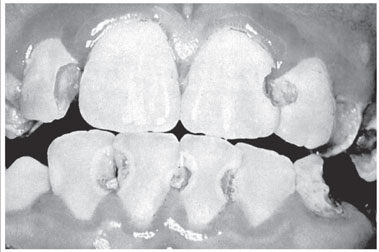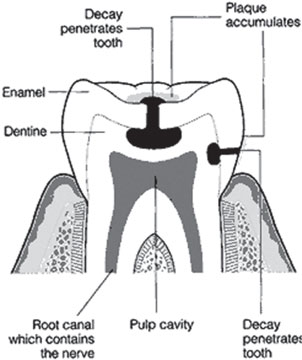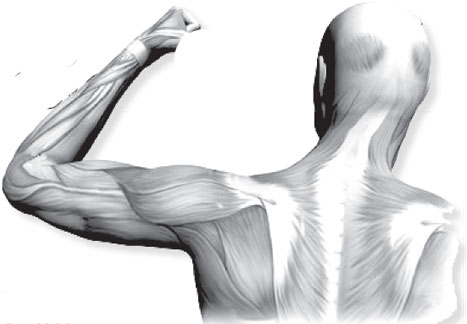|

Xylitol in preventing tooth decay:
Protective function of substitute sweetener
by Prof. R. L. Wijeweera
The last National Oral Health Survey conducted in 2002/2003 reveals
that the DMFT value for the deciduous dentition in the 5 year old
children is 3,5. The DMFT value for permanent dentition in 12, 15, 35-44
and 65-74 year olds are shown to be 0.9, 1.5, 8.4 and 17.1 respectively.
In addition the prevalence of carious teeth I the deciduous dentition in
the 5 year olds is shown to be 65.3%. Caries prevalence in the permanent
dentition of 12,15,35-44 and 65-74 years remains at 39.2%, 15.3%, 89.8%
and 71.1% respectively (National Oral Health Survey 2002/2003). This
seems quite high when compared to the figures in the developed world.
 The above statistics clearly shows that tooth decay remains an
important health problem in Sri Lanka. Furthermore, changes in our diet
over the past two decades have contributed to an increase in a range of
dental problems, especially amongst the young. The above statistics clearly shows that tooth decay remains an
important health problem in Sri Lanka. Furthermore, changes in our diet
over the past two decades have contributed to an increase in a range of
dental problems, especially amongst the young.
Many people falsely assume that tooth decay or dental caries is
caused by bacteria ‘eating through our teeth’. In fact the bacteria
responsible for caries, Streptococcus mutans and Lactobacillus species,
live in plaque, that we all have, and use the sucrose (sugar) from the
food we consume and metabolise it. In this process bacteria produce
acid, which demineralise, the hard tissue of the teeth (enamel initially
and thereafter the dentine) and thereby causing cavities in the teeth.
It’s a known fact that if this situation is left untreated, dental
caries will lead to pulpits, periodontitis and if further neglected to
tooth loss. As a measure of preventing tooth decay now researchers look
in the direction of limiting the growth of aciduric and acidogenic
bacteria growing in individual mouths (Wijeyeweera and Kleinberg 1989).
But is it still possible to reduce the acid thus produced by bacteria
via fermentation of sugar? At the same time, can we reduce the bad
effects of sugar by using a sugar substitute that is not harmful, while
enjoying the sweet taste that we have come to crave so much?
Sugar-Xylitol
Fortunately, there is a natural substance called Xylitol which is
just as sweet as sugar but at the same time helps to prevent tooth
decay. The dental benefits of Xylitol have been extensively studied
since the 1970s. Since then, these findings have been confirmed and
revisited by many international researchers in over 1,500 studies on
Xylitol.
It is now time to extract the benefits of this natural substance in
preventing the most prevalent disease in mankind - the tooth decay.
Xylitol research
For example, during a study carried out in Montreal, Canada, in 1990,
children who had a high risk of developing tooth decay were either given
Xylitol gum or no gum at all. The group that had no gum had 6.06 decayed
missing or filled tooth surfaces (DMFS) per person whereas the group
that chewed Xylitol gum, the DMFS figure was 2.24.
The most comprehensive study, involving 1277 subjects, was conducted
in 1995. This study looked at the relative risk of caries formation. A
value below I indicated a reduction in risk of 0.41 and those who chewed
it five times a day had a relative risk of 0.27.
 Furthermore, babies can also benefit if their mothers chew Xylitol
gum. Studies have shown that levels of the S. mutans bacteria that cause
tooth decay were lower in children who were breast fed by mothers who
chewed Xylitol gum 2-3 times per day. Furthermore, babies can also benefit if their mothers chew Xylitol
gum. Studies have shown that levels of the S. mutans bacteria that cause
tooth decay were lower in children who were breast fed by mothers who
chewed Xylitol gum 2-3 times per day.
Xylitol and tooth decay
Xylitol prevents tooth decay in three ways. Firstly, its
antimicrobial because it reduces the ability of S.Mutans to adhere and
so the bacteria can be more easily removed from plaque by brushing.
Secondly, Xylitol cannot be fermented by bacteria to make acid.
Therefore, it inhibits enamel demineralization. Thirdly, it is believed
to be toxic to S.Mutans and so Xylitol is capable of reducing the growth
of these harmful bacteria. In 2006 researchers at the University of
Washington showed that after 5 weeks of Xylitol usage the level of
mutans streptococci in plaques was ten times lower than at the start.
For these reasons, Xylitol is recommended as a sugar substitute by
responsible dental bodies around the world. It was initially endorsed by
the Finnish Dental Association in 1988, followed by the Swedish Dental
Association (Sveriges Tandilakarforbund) in 1989, the Norwegian Dental
Association (Den Norske Tannlegeforening) in 1990 and the British Dental
Association in 1992. The American Academy of Paediatric Dentistry states
‘The American Academy of Paediatric Dentistry (AAPD) recognises the
benefits of caries preventive strategies involving sugar substitutes,
particulary Xylitol, on the oral health of infants, children,
adolescents, and persons with special health care needs. The U.S. Army
Center for Health Promotion and Preventive Medicine states “Because it
fights bacteria so well, people who chew Xylitol gum can reduce their
risk of cavities”. The Australian Ministry for Health states “Both
Xylitol and sorbitol have been shown to have a preventive effect on
dental caries”.
Xylitol and diabetes
Xylitol is also described as ‘safe’ for diabetics. It has a very low
glycemic index of 13 compared. To sucrose sugar which has a glycemic
index of 60. This means that it results in lower blood sugar level and
therefore reduces the need for insulin. Xylitol also produces less
calories (2.4 kcal/g) than that of sucrose sugar (4 kcal/g).
Xylitol vs artificial sweeteners
Unlike some sweeteners such as Aspartame, Xylitol is a completely
natural substance that is found in many plants and animals, including
food items that humans have consumed during the course of their whole
evolution.
For example, it is found in mushroom, berries, cauliflower and sweet
corn. In fact no matter what you eat, up to 15 g of Xylitol is made in
your own body each day as an intermediate during normal metabolism. Like
with other polyol sweeteners, excessive consumption of Xylitol may cause
some temporary laxative effects in certain people. This is because these
sweeteners are not completely digested and when they pass through the
digestive system, they can attract water. However, this effect varies
from person to person. Studies have shown that some people can even
consume 430 g of Xylitol per day without having any problems.
Furthermore, studies, have shown that after consuming Xylitol for four
weeks the bodies of mice, rats and humans have adapted so well, so that
they can use Xylitol more effectively thus resulting in a decrease in
the laxative effects.
Xylitol seems to be a truly remarkable natural sugar substitute. It
is just as sweet as the sugar we consume daily (Sucrose), but doesn’t
have the cariogenic effect as such.
Compared to the sugar Sucrose, Xylitol is capable of preventing tooth
decay while it is also safe for diabetics, since it has a 40% lesser
dcaloric value.
In recent years, Xylitol has become increasingly popular as a premium
sugar substitute around the world. Xylitol in time to come may be
considered as a safe and a healthy option for a sweet life!
(The writer is Professor in Paedodontics, Division of Paedodontics,
Faculty of Dental Sciences, University of Peradeniya)
Genetic switch to increase muscle blood supply
Many people suffer from a devastating condition known as Critical
Limb Ischemia (CLI) that can lead to muscle wasting and even amputation.
The disease is linked to the blockage of blood flow to the skeletal
muscle and current treatment options include rehabilitative exercise and
surgical bypass of blood vessels. New preclinical research suggests
there may be a way to restore blood supply in skeletal muscle without
traditional intervention.
 Scientists at the University of Texas Health Science Center at
Houston (UTHealth) and the Salk Institute for Biological Studies
announced in the March 2 print issue of the journal Cell Metabolism that
they have identified a genetic switch that can increase the number of
blood vessels in the skeletal muscle of non-exercising mice.Skeletal
muscle is composed of two types of fibers: slow twitch fibers that
inherently have a dense supply of blood vessels and fast twitch fibers
that have fewer blood vessels. The researchers used a gene switch known
as estrogen-related receptor gamma (ERR gamma) that when activated in
fast twitch fibers of mice by genetic engineering, converts these fibers
into slow twitch fibers. Scientists at the University of Texas Health Science Center at
Houston (UTHealth) and the Salk Institute for Biological Studies
announced in the March 2 print issue of the journal Cell Metabolism that
they have identified a genetic switch that can increase the number of
blood vessels in the skeletal muscle of non-exercising mice.Skeletal
muscle is composed of two types of fibers: slow twitch fibers that
inherently have a dense supply of blood vessels and fast twitch fibers
that have fewer blood vessels. The researchers used a gene switch known
as estrogen-related receptor gamma (ERR gamma) that when activated in
fast twitch fibers of mice by genetic engineering, converts these fibers
into slow twitch fibers.
“This consequently resulted in a striking increase in muscle blood
supply as measured by imaging and angiography,” said Vihang Narkar,
Ph.D., lead investigator and assistant professor of molecular medicine
at the UTHealth Medical School.
“These genetically-transformed muscles also acquire other
characteristics of slow muscles, such as improved metabolic capacity and
fatigue resistance that can be additionally beneficial in resolving
muscle vascular disease.”
Narkar, whose UTHealth laboratory is in the Center for Diabetes and
Obesity Research at the Brown Foundation Institute of Molecular Medicine
for the Prevention of Human Diseases, said, “The identification of the
estrogen-related receptor gamma vascular switch will open potential
therapeutic avenues for treating CLI and other cardiovascular diseases
linked to defective blood supply.”
Colin Barker, M.D., assistant professor of cardiology at the UTHealth
Medical School, said new research is needed to help people with
peripheral artery disease, particularly those with the most severe form
- critical limb ischemia.
“Poor circulation in the legs can lead to muscle wasting, infections,
severe pain, and amputation,” he said.
“Dr. Narkar’s work potentially has many useful applications. It is
very much in the translational medicine arena.”
“Understanding the gene network that specifies high vascular supply
to muscle gives us a new and very powerful tool to promote improved
muscle performance and the promise of fitness, especially for those who
cannot work out,” says Ronald M. Evans, Ph.D., senior author, Howard
Hughes Medical Institute Investigator and professor in the Salk
Institute’s Gene Expression Laboratory.
“This is good news for people with heart disease, frailty, peripheral
vascular disease, and more generally those who have a variety of medical
problems where exercise could be helpful but is not possible to
achieve.”
“Exercise is an important part of any intervention strategy to
prevent or treat diabetes mellitus and obesity,” said Perry Bickel,
M.D., associate professor of medicine at the UTHealth Medical School and
director of the UTHealth Center for Diabetes and Obesity Research.
“Results by Drs. Narkar and Evans support the notion that in the
future we may be able to design drugs that produce the benefits of
exercise in order to counteract the damage that diabetes and obesity
cause to the body, such as blockages of blood vessels.”
Narkar and Evans collaborated on a highly-publicized study published
in the journal Cell in 2008 in which they used two investigational
exercise mimetic drugs - GW1516 and AICAR - to increase the endurance of
non-exercising mice. These drugs target different genetic switches,
namely PPAR delta and AMPK.
UTHealth research assistant Sabina Lorca also contributed to the
study. Contributors from the Salk Institute include: Weiwei Fan, Ph.D.;
Michael Downes, Ph.D.; Ruth T. Yu., Ph.D.; Johan W. Jonker, Ph.D.;
William A. Alaynick, Ph.D.; Ester Banayo; and Malith S. Karunasiri.
The study, titled “Exercise and PGC1-alpha-Independent
Synchronization of Type I Muscle Metabolism and Vasculature by ERR
gamma,” was supported by funding from the Howard Hughes Medical
Institute, the Larry L. Hillblom Foundation, the Nuclear Receptor
Signaling Atlas, The Leona M. and Harry B. Helmsley Charitable Trust and
the National Institutes of Health (NIH) to Evans.
Grants from the NIH and the Muscular Dystrophy Association to Narkar
also supported this study.
Source: Salk Institute for Biological Studies (UTHealth)
Alcohol abuse and alcoholism
by Debra Wood
Alcohol abuse is excessive or problematic alcohol consumption. It can
progress to alcoholism. Alcoholism is chronic alcohol abuse that results
in a physical dependence on alcohol (withdrawal symptoms) and an
inability to stop or limit drinking.
Causes
Several factors can contribute to alcohol abuse and alcoholism,
including:
* Genes
* Brain chemicals that may be different than normal
* Social pressure
* Emotional stress
* Pain
* Depression and other mental health problems
* Problem drinking behaviours learned from family or friends
Risk factors
These factors increase your chance of developing alcoholism. Tell
your doctor if you have any of these risk factors:
* Sex: male
* Family members who abuse alcohol (especially men whose fathers or
brothers are alcoholic)
* Starting to use alcohol at an early age (younger than 14)
* Using illicit drugs or non-medical use of prescription drugs
* Peer pressure
* Easy access to alcoholic beverages
* Psychiatric disorders, such as depression or anxiety
* Smoking
Symptoms
It is common to deny an alcohol problem. Alcohol abuse can occur
without physical dependence.
Alcohol abuse symptoms include:
* Repeated work, school, or home problems due to drinking
* Risking physical safety
* Recurring trouble with the law, often including drinking and
driving
* Continuing to drink despite alcohol-related difficulties Symptoms
of alcoholism include:
* Craving a drink
* Unable to stop or limit drinking
* Needing greater amounts of alcohol to feel the same effect
* Giving up activities in order to drink or recover from alcohol
* Drinking that continues even when it causes or worsens health
problems
* Wanting to stop or reduce drinking, but not being able
* Withdrawal symptoms if alcohol is stopped include:
o Nausea
o Sweating
o Shaking
o Anxiety
o Increased blood pressure
o Seizures (delirium tremens [DTs])
The brain, nervous system, heart, liver, stomach, gastrointestinal
tract, and pancreas can all be damaged by alcoholism.
Diagnosis
Doctors ask a series of questions to assess possible alcohol-related
problems, including:
* Have you tried to reduce your drinking?
* Have you felt bad about drinking?
* Have you been annoyed by another person’s criticism of your
drinking?
* Do you drink in the morning to steady your nerves or cure a
hangover?
* Do you have problems with a job, your family, or the law?
* Do you drive under the influence of alcohol?
Blood tests may be done to:
* Look at the size of your red blood cells and to check for a
Substance called carbohydrate-deficient transferrin
* Check for alcohol-related liver disease and other health problems
Treatment
Treatment for alcohol abuse or dependence is aimed at teaching
patients how to manage the disease. Most professionals believe that this
means giving up alcohol completely and permanently.
The first and most important step is recognizing a problem exists.
Successful treatment depends on your desire to change. Your doctor can
help you withdraw from alcohol safely. This could require
hospitalization in a detoxification center. They will carefully monitor
you for side effects. You may need medication while you are undergoing
detoxification.
Education and counselling
Therapy helps you to recognize alcohol’s dangers. Education raises
awareness of underlying issues and lifestyles that promote drinking.
In therapy, you work to improve coping skills and learn other ways of
dealing with stress or pain.
Mentoring and community help Alcoholics Anonymous (AA) helps many
people to stop drinking and stay
sober. Members meet regularly and support each other. Family members
may also benefit from attending meetings of Al-Anon. Living with an
alcoholic can be a painful, stressful situation.
Suggestions to decrease the risk of alcohol abuse and dependence
include:
* Socialize without alcohol.
* Avoid going to bars.
* Do not keep alcohol in your home.
* Avoid situations and people that encourage drinking.
* Make new non-drinking friends.
* Do fun things that do not involve alcohol.
* Avoid reaching for a drink when stressed or upset.
* Limit your alcohol intake to a moderate level, after consulting
your doctor.
* If you are a parent, having a good relationship with your
children may reduce their risk of alcohol abuse.
Most professionals who treat alcohol abuse and dependence believe
that complete abstinence is the only effective “prevention.”
Courtesy: AHealthyMe
|

